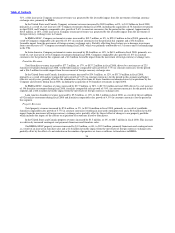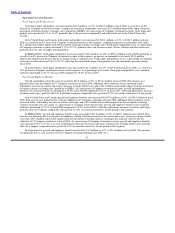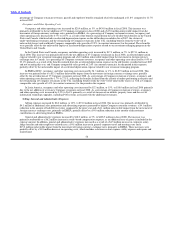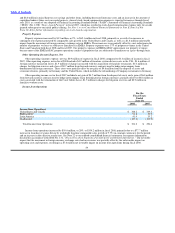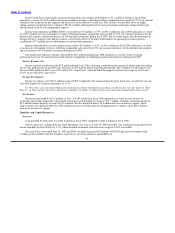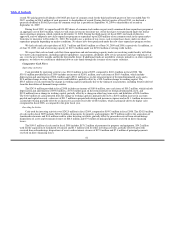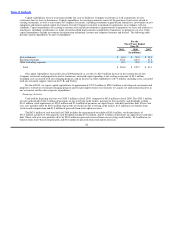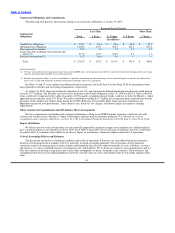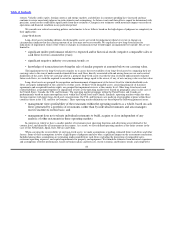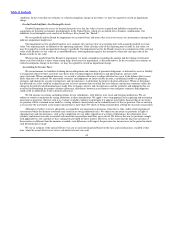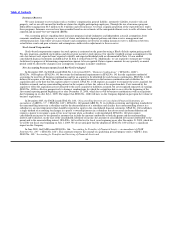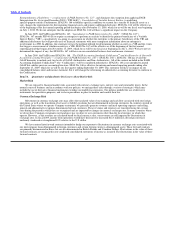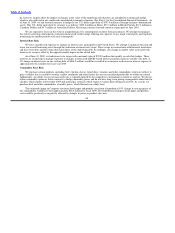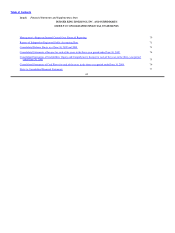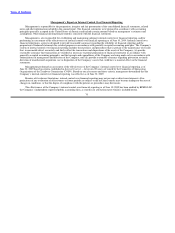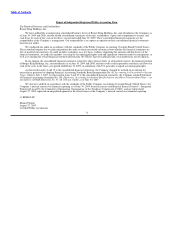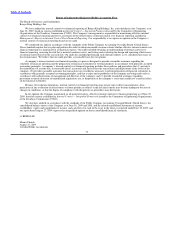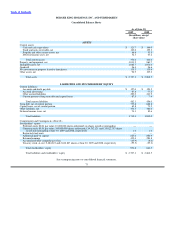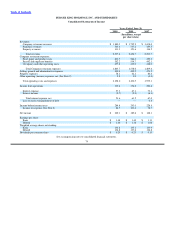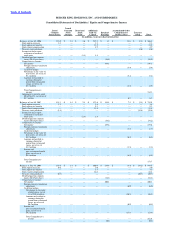Burger King 2009 Annual Report Download - page 68
Download and view the complete annual report
Please find page 68 of the 2009 Burger King annual report below. You can navigate through the pages in the report by either clicking on the pages listed below, or by using the keyword search tool below to find specific information within the annual report.
Table of Contents
Insurance Reserves
We carry insurance to cover claims such as workers’ compensation, general liability, automotive liability, executive risk and
property, and we are self−insured for healthcare claims for eligible participating employees. Through the use of insurance program
deductibles (ranging from $0.5 million to $1.0 million) and self insurance, we retain a significant portion of the expected losses under
these programs. Insurance reserves have been recorded based on our estimates of the anticipated ultimate costs to settle all claims, both
reported and incurred−but−not−reported (IBNR).
Our accounting policies regarding these insurance programs include judgments and independent actuarial assumptions about
economic conditions, the frequency or severity of claims and claim development patterns and claim reserve, management and
settlement practices. Since there are many estimates and assumptions involved in recording insurance reserves, differences between
actual future events and prior estimates and assumptions could result in adjustments to these reserves.
Stock−based Compensation
Stock−based compensation expense for stock options is estimated on the grant date using a Black−Scholes option pricing model.
We only grant non−qualified stock options and do not grant incentive stock options. Our specific weighted average assumptions for the
risk−free interest rate, expected term, expected volatility and expected dividend yield are documented in Note 3 to our audited
consolidated financial statements included in Part II, Item 8 of this Form 10−K. Additionally, we are required to estimate pre−vesting
forfeitures for purposes of determining compensation expense to be recognized. Future expense amounts for any quarterly or annual
period could be affected by changes in our assumptions or changes in market conditions.
New Accounting Pronouncements Issued But Not Yet Adopted
In December 2007, the FASB issued SFAS No. 141 (revised 2007), “Business Combinations” (“SFAS No. 141R”).
SFAS No. 141R replaces SFAS No. 141 but retains the fundamental requirements in SFAS No. 141 that the acquisition method of
accounting be used for all business combinations and for an acquirer to be identified for each business combination. SFAS No. 141R
defines the acquirer as the entity that obtains control of one or more businesses in the business combination and establishes the
acquisition date as the date that the acquirer achieves control. SFAS No. 141R requires an acquirer to recognize the assets acquired, the
liabilities assumed, and any noncontrolling interest in the acquiree at their fair values at the acquisition date. Costs incurred by the
acquirer to effect the acquisition are not allocated to the assets acquired or liabilities assumed, but are recognized separately in earnings.
SFAS No. 141R is effective prospectively to business combinations for which the acquisition date is on or after the beginning of the
first annual reporting period beginning on or after December 15, 2008, which for us will be business combinations with an acquisition
date beginning on or after July 1, 2009. The impact that SFAS No. 141R will have on the Company depends in part upon the volume of
business acquisitions.
In December 2007, the FASB issued SFAS No. 160, “Noncontrolling Interests in Consolidated Financial Statements, an
amendment of ARB No. 51” (“SFAS No. 160”). SFAS No. 160 amends ARB No. 51 to establish accounting and reporting standards for
the noncontrolling interest in a subsidiary and for the deconsolidation of a subsidiary and clarifies that a noncontrolling interest in a
subsidiary is an ownership interest that should be reported as equity in the consolidated financial statements. SFAS No. 160 establishes
a single method of accounting for changes in a parent’s ownership interest in a subsidiary that do not result in deconsolidation and
requires a parent to recognize a gain or loss in net income when a subsidiary is deconsolidated. SFAS No. 160 also requires
consolidated net income to be reported at amounts that include the amounts attributable to both the parent and the noncontrolling
interest and to disclose, on the face of the consolidated statement of income, the amounts of consolidated net income attributable to the
parent and to the noncontrolling interest. SFAS No. 160 is effective for fiscal years beginning on or after December 15, 2008, which for
us will be our fiscal year beginning on July 1, 2009. We do not anticipate that the adoption of SFAS No. 160 will have a significant
impact on the Company.
In June 2009, the FASB issued SFAS No. 166, “Accounting for Transfers of Financial Assets — an amendment of FASB
Statement No. 140” (“SFAS No. 166”). This statement removes the concept of a qualifying special−purpose entity (“QSPE”) from
SFAS No. 140, “Accounting for Transfers and Servicing of Financial Assets and
66


